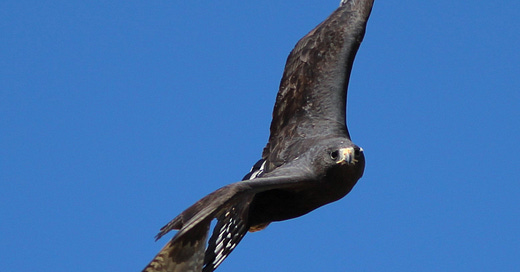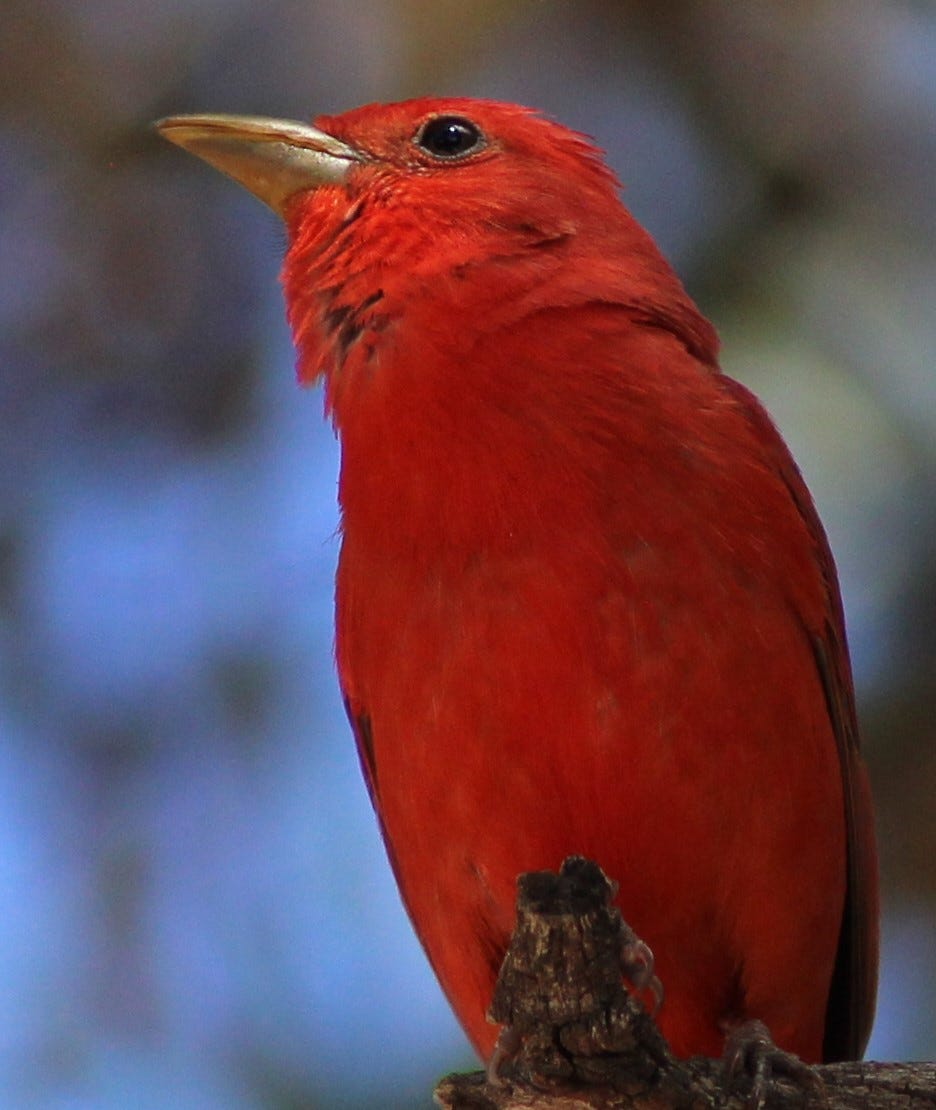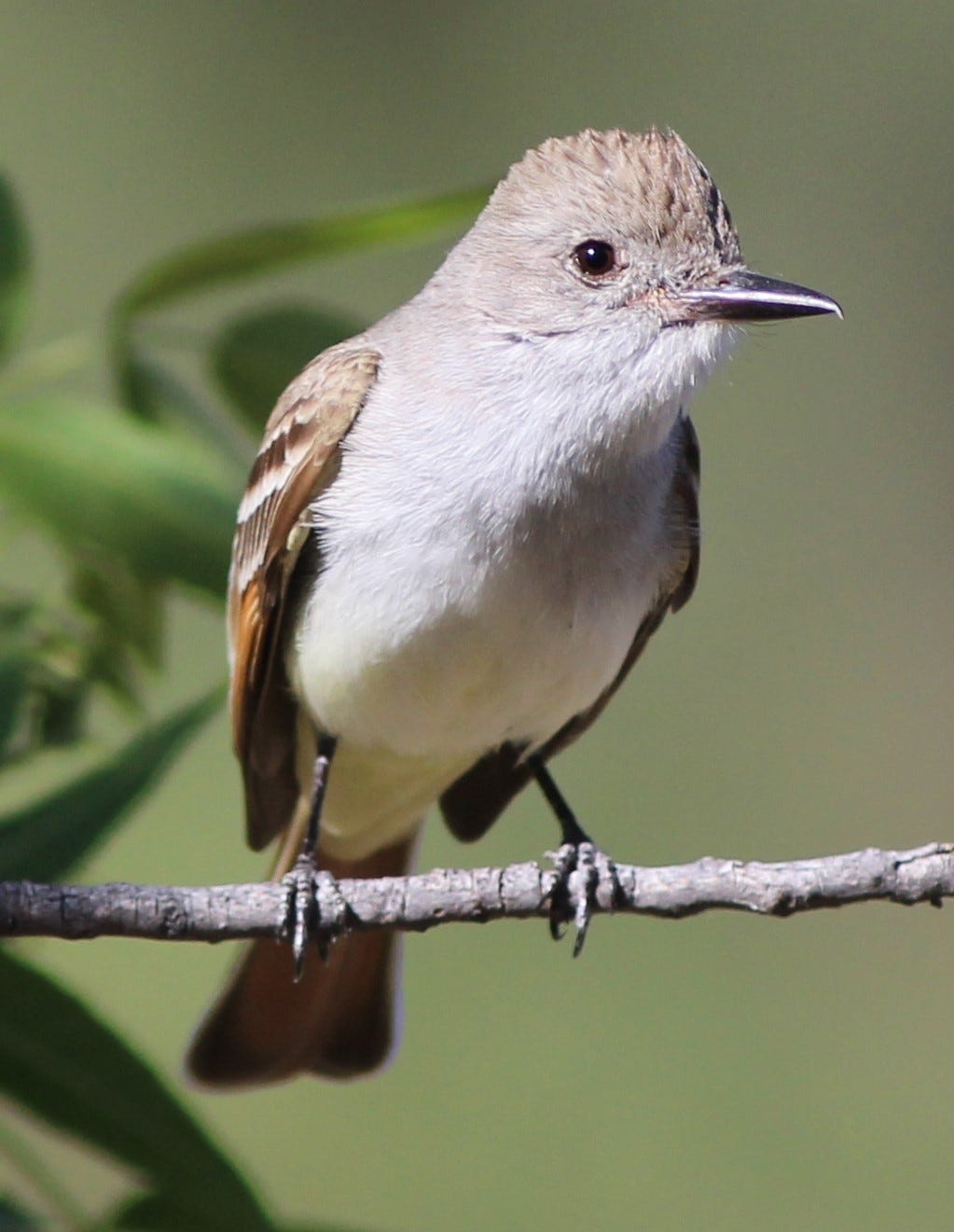Day 35 of the Quarantine (April 17, 2020)
I’ve completed checklists for twenty days of continuous birding on eBird. My new life goal, to satisfy my growing obsession, is to make at least one report every day for an entire year—345 days to go.
I drive to Marsh Station an hour northwest of Bisbee to meet with First Daughter and assist her with mounting four remote cameras at two drainage culverts that run beneath I-10. A biologist working for Tucson’s Coalition for Sonoran Desert Protection, she’s studying mammal movements along an important wildlife corridor near Davidson Canyon, a saguaro-studded arroyo that connects the Santa Rita and Rincon mountains, two links in a chain of so-called Sky Islands that join the Rockies to the Sierra Madres. Along with the coati and fox and mountain lion, Jessica has documented black bear in this place, a species being disrupted by the Interstate in fatal ways.
We start at Cienega Creek, hiking along a green twisted thread of backwater beneath cottonwoods reaching into an unblemished blue sky. A pair of zone-tailed hawks screams at us, circling above our heads. “Should I put on my hardhat?” Jessica asks. I’m already wearing mine.
I haven’t seen Jessica since the start of the pandemic when I drove to her home in Tucson and delivered a gallon of milk to her husband and two small children as the shortages began. Bisbee still had milk and toilet paper. At the time she figured I was safe, believing that the virus that had laid up both her mom and me with fever and chills and a deep-chest cough was Covid-19 and having recovered I would no longer pass on the contagion. That was one theory anyway.
This virus, however, is turning out to be unlike any seasonal flu virus.
David Quammen warned about this kind of spillover in his 2012 book by that title, saying that as we continue to disrupt the natural world, viruses will increasingly spread from wild animal populations to humans. “The most serious outbreak on the planet earth is that of the species Homo sapiens.”
We’re here to study this small part of the natural world, using tracking surveys and stealthy trail cameras to learn ways wildlife can avoid becoming roadkill.
Five hours later, and six miles of slogging through the loose sand of chocolate-walled drainages, I log 23 species of birds on eBird, including the omni-present Gila woodpeckers, flycatchers, and tanagers with some nice looks at a flushed barn owl. Vermillion flycatchers, year-round residents in every green place in southern Arizona, it seems, snapped at flying insects while the ash-throated furtively joined them, making sorties from the willows and calling with their musical kaBRICK. Male summer tanagers competed with the vermillions for show in retina-burning reds, the tanagers having navigated thousands of miles in darkness from southern Mexico, Central America, and even South America to nest and rear their young in these lush riparian reaches. I’ve yet to check them off in my yard with the two other tanagers (western and hepatic), but it could happen at any day, now that I am watching!
“Twenty-three species!” Jessica says. “That’s a lot!”
“I get twice that in my yard, every day,” I say.
“Yeah, but that’s your yard! You’ll get more next month when you check the cameras.”
“Check the cameras?”
“Didn’t I tell you, Dad? You’re now one of my volunteers.”












I've never been to Cienega Creek but always take note of it when driving I-10 to and from Tucson. You're lucky to have access to it. Outstanding Zone-tailed photos too!
Wow